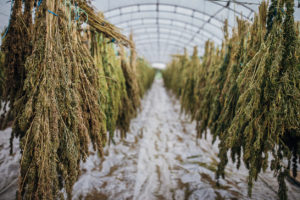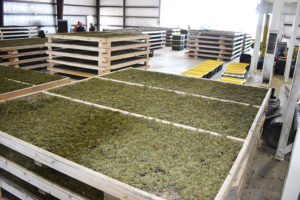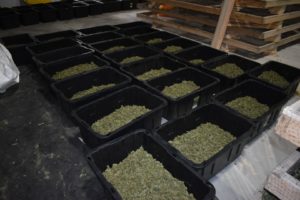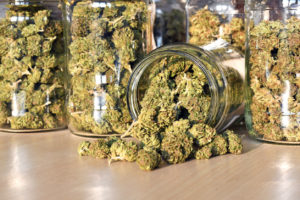While some of you are using commercial facilities, there are a lot of us who do our own post-production work. Drying and curing our crops is part of our business model. In some cases, we also have to find ways to store hemp long term while we seek buyers. In this blog, I wanted to round up a few insights I’ve gathered over the years on some of the best practices that ensure success as you get your crop out of the field and on to the marketplace.
DRYING YOUR HEMP
There are two main methods of drying hemp: hanging and racks. Naturally, there are pros and cons to both. Whichever you choose, your goal here is to achieve a maximum moisture of between 10 and 15 percent. Aim for the middle to reduce your risk. Let’s take a look at the key factors involved for both methods.
Hang Drying

This method is probably the most common, especially for new growers, as it is simple and economical to do. You’re drying the entire plant, so that is going to take a bit of time and will vary with your local humidity levels. Figure a week or more. It can also be a tremendous challenge to continuously monitor and maintain the right airflow and temperature. If the humidity is too high, let in some fresh air.

Rack Drying
This method takes more upfront time but reduces drying time since you buck the plants of the stems and lay out the individual buds on trays. This also saves space versus hang drying. Drying time is significantly reduced and you’ll be able to better control the air flow and temperature factors. Keep the building humidity below 60% and you may have to flip the racks if they bottom bud is drying slower than the top bud.
Which One Should I Choose?
Your decision should be based on your own specific resources – time, human, and financial. That said, you don’t have to choose! Do both! A lot of operations use both methods and get great results. Trying both out will help you develop an informed preference that works best for your grow.
CURING



While lots of growers sell their hemp right after drying, you can take your product to the next level by curing your hemp buds – if you have the patience to giving the curing process a few weeks to work its magic. You will be rewarded with a superior product that features milky white trichomes and intense aroma and flavor. The tricky part here is to ensure that your hemp is properly dried. Too dry, and your cured hemp could be brittle and dry. Not dry enough, and your hemp can develop mold. We put the rack dried flower into 25 gallon bins, which In the simplest sense, you are going to put your dried hemp flower into airtight containers and place them in a dark room at 60-70 degrees for anywhere from 30 to 60 days. Every few days, you will “burp” (open up) the containers and flip the contents to resort the bud and reoxygenate. The burping also means you’ll be getting a close visual inspection of your flower so that you can keep an eye on how they are developing. Use sight, smell, and touch to determine when your buds are cured to your satisfaction!
LONG-TERM STORING

As CBD production continues to mature and the marketplace evolves, we are still sometimes challenged to find buyers for our yield. When that happens, prepare your hemp for long-term storage in a way that will preserve product quality and keep it optimal for sale. Your goal is to protect it from too much light, heat, humidity, and oxygen. Let’s talk some metrics. Store your hemp in a place where you can keep the temperature between 60-70 degrees Fahrenheit, the relative humidity in the low 60s and the room dark. Seal the buds in airtight containers, mylar bags that are heat sealed are a good choice. I urge you to investigate and invest in commercial products. There are several good companies out there that have containers and other aids (like two-way humidity packs) that can help you create a stable, successful storage environment.
Do you have other ideas or suggestions for drying, curing, and storing? I’d love to hear them!
Happy growing, friends!


Recent Comments